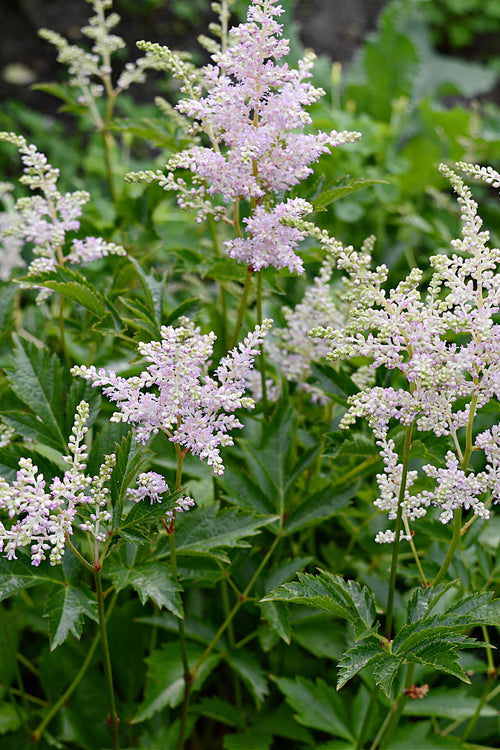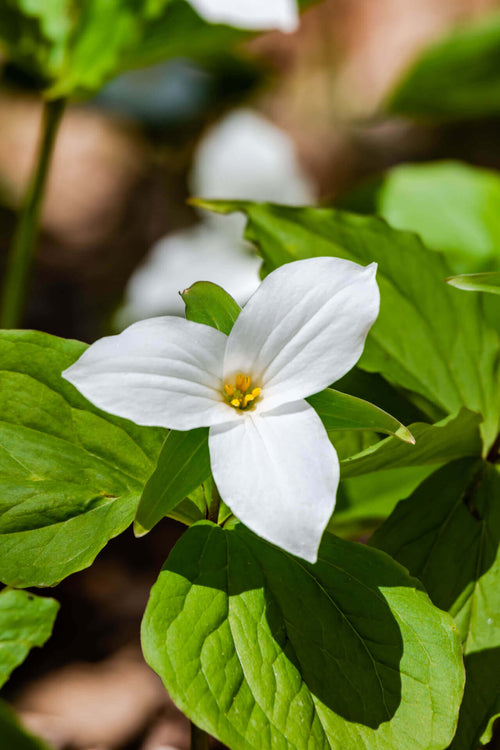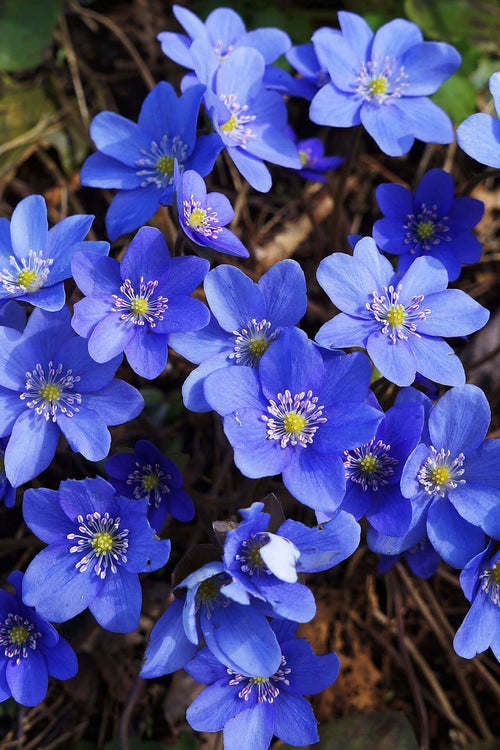Top 10 Shade Perennials
Everyone loves a garden filled with vibrant and bright flowers. However, shady gardens, too, need some love. They're awash with beautiful leaves and exotic, delicate flowers. Some have names that are irresistibly cool too! Choose plants that are suitable for the USDA Hardiness Zone and consult with the nursery or study the plant's label to determine if it can manage the conditions of your backyard.
Be aware that full shade implies the area doesn't get direct sunlight. Part shade means it isn't getting more than 3-4 hours of sunshine daily. Here we will explore the top ten shade perennials for your garden.
Goat's Beard Plant
Goatsbeard (Aruncus dioicus) is, also known as goat's Beard, also referred to as bride's feathers, a herbaceous perennial plant belonging to the family of roses (Rosaceae) is native to the northern zone of the temperate zone. Goatsbeard is usually referred to as the only species belonging to the Aruncus genus. Aruncus.
It is renowned for its long and feathery plumes of cream-white or delicate pink flowers that bloom in the Spring and the beginning of summer.
Goat's Beard favors well-drained, moist soils and partial shade to full sun. It can reach as high as 4 feet tall and 4 feet in width. Its leaves are very lobed and resemble a fern. The flowers attract bees as well as other pollinators.
Goat's Beard is a low-maintenance plant that requires minimal pruning or fertilization. It's an excellent option for a woodland garden or mixed border. It is suitable for cut flower arrangements.
Virginia Spring Beauty
The Virginia spring beauty plant, also called Claytonia virginica, is a tiny perennial herbaceous wildflower indigenous to the eastern part of North America, including the eastern United States and Canada. It is usually around 5-15 centimeters tall and features white or pink flowers that bloom in Spring, typically from March through May.
Virginia blooms in Spring is a North American native species, first discovered at the time of its discovery in New England but flourishing today throughout all USDA zones of cultivation. The perennial flower favors full shade over partial shade and is a simple-to-care natural woodland species that is simple and easy to maintain.
Apart from regular maintenance, like regular mulching with woody material and watering the plants, gardening enthusiasts could ignore this beautiful small plant. It is resistant to drought, pests, and mildew and is expected to be able to last for years.
White Trillium
White trillium is an imposing native plant with a stunning white flower that is drought-resistant and cold-tolerant. It is a perennial bloomer that appears in Spring each time, even in environments that are brutally cold to other species. But it also thrives in warmer climates.
White Trillium Grandiflorium is a vivid, long-lasting perennial plant perfect for adding color to outdoor spaces. White Trillium blossoms in the early spring months and produces stunning white flowers surrounded by green foliage. It's simple to care for and is drought-resistant, making it an excellent option for low-maintenance gardens.
Early explorers and settlers noticed several trillium species, including the grandiflorum, from the cold regions of New England to the southeast. It's a fantastic choice for semi-shade plants in nearly every USDA cultivating zone.
Virginia Bluebell
Virginia Bluebell perennials are shade-loving native flowering woody plants found in rich, moist soils in the eastern portion of the United States. They are a beautiful addition to garden flowers by adding the perfect pink, purple, and lavender splashes with clusters of blue-purple bell-shaped blossoms. They bring beauty and are easy to maintain and will come back every Spring with stunning flowers.
Virginia bluebells are cold hardy as well as tolerant of heat. They thrive in full and partially shaded areas in nearly every growth zone in the contiguous United States, even in warmer climates.
Virginia bluebells require only a little help from the gardener. In addition to a semi-shaded location with drainage-friendly soil, it is regularly fertile and waters in extended dry periods. It's as simple for beginner gardeners to be successful with this gorgeous flower as experienced professionals.
Rue Anemone
Broad stalks of basal leaves characterize this plant. The leaves form groups of 3 leaves, each with three leaflets. These leaves are hairless and feature three distinct round edges at the tip of their lobes. Each will reach approximately 1 inch long, and the stalks will grow to 1 inch high. The Rue Anemone Plant will produce numerous upright, unbranched, and hairless stems.
This perennial herbaceous is ideal for any type of planting, including slopes, gardens and walkways, rock gardens, and even tiny areas. It is a magnet for butterflies, moths, bees, and smaller mammals.
This flower with a low slope is considered slow-growing and can only grow to a width between 6 and 9 inches at maturity. It is a delicate, early-flowering plant that can thrive in neutral soils and has some shade or even total shade conditions.
Iris Cristata
Iris Cristata is a flowering plant belonging to the Iris family. They have three petals adorned by deep blue, yellow or violet lines. The dark flowers are punctuated with bright white and bright yellow accents. These gorgeous flowers are in the springtime, generally between April and June, subject to the area's climate.
While this plant thrives in a mixed-shade setting with around six hours of filtered light, It can also adapt to the full sun by adding more water. This flower matures rapidly and will thrive with just a little maintenance.
The iris cristata flower can be the perfect choice to add natural beauty to an area of woodland. It's also stunning when planted in the shade of a butterfly or pollinator garden.
Indian Pink Plant
Indian Pink is easily identified by its gorgeous outer petals, with deep pink to bright red blooms. The flowers are tubular and have a stunning, bright yellow five-petalled starburst. They bloom in late Spring, typically from mid-May and early June, depending on the plant's zone.
The plant is found in clumps and can grow to 2' wide and more than 2 feet tall. The leaves are lovely true green, narrow, long, and strap-shaped. Indian Pink is stunning when planted in the shade of a garden pollinator or any natural setting. It is beautiful in any shady area that could benefit from a sunny burst of color.
Golden Poppy Plant
Celandine poppy plants are tiny, stunning clumps that are stunning in a variety of settings. This vibrant yellow color will delight you when you display them in urns flanking a shaded entrance or an outdoor area.
The poppy plant is tall and stylish. The golden blooms measure 3 and 4" across and come with four petals, wrinkled edges, and beautiful round shapes. Flower heads have the form of a saucer.
A perennial plant can live for two seasons or growing cycles. It is, however, self-seeding. It means that you don't have to plant it manually. The seeds fall off after the flowers die, so you won't have to work hard. Mother Nature will take care of it for you.
Hepatica Plant
Hepatica is known by its common names liverwort, liverleaf, and liverleaf because of the appearance of the leaves of the plant with three lobes that resemble a liver's shape.
Hepatica is not fussy about the soil type and can be grown in some of the most challenging conditions. If you've got a wet area in your yard where nothing will develop due to excessive shade, Hepatica could be the ideal solution for filling that area. It's also beautiful to place near a water feature or fountain that causes a lot of spillages and remains damp.
Lily Of The Valley Plant
Lily of the valley is incredibly fresh, sweet, and delicate. It's a delicate floral scent reminiscent of springtime with light hints of jasmine and honey. Gardeners are looking for a soft and soothing fragrance throughout the year.
Lily of the Valley has low maintenance requirements and is easy to care for
The tiny flowers resemble tiny bells. They're plentiful and blossom in the springtime, breaking the monotony of the long winter months. The flowers can be as high as eight" in height. The plant thrived in light conditions that were full or mixed shade conditions in USDA zones 3-9.





















































